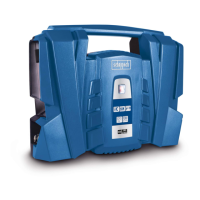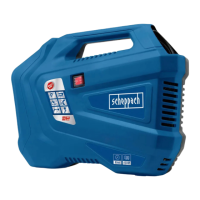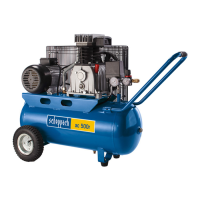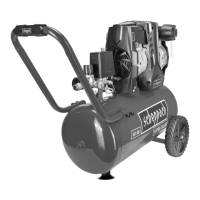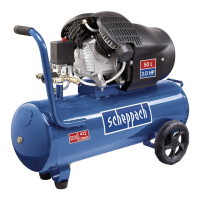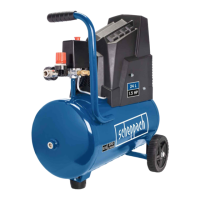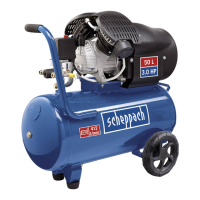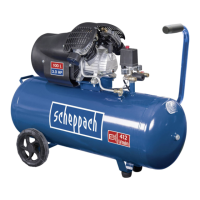www.scheppach.com
GB
|
17
e. When operating a power tool outdoors, use an
extension cord suitable for outdoor use.
risk of electric shock.
f. If operating a power tool in a damp location
is unavoidable, use a residual current device
(RCD) protected supply.
Personal safety
a. Stay alert, watch what you are doing and use
common sense when operating a power tool.
Do not use a power tool while you are tired or
under the inuence of drugs, alcohol or med-
ication.
A moment of inattention while operating power
b. Use personal protective equipment. Always
wear eye protection.
used for appropriate conditions will reduce per-
3. Prevent unintentional starting. Ensure the
switch is in the o-position before connecting
to power source and/or battery pack, picking
up or carrying the tool.
or energising power tools that have the switch on
invites accidents.
d. Remove any adjusting key or wrench before
turning the power tool on.
e. Do not overreach.
Keep proper footing and balance at all times. This
enables better control of the power tool in unex-
pected situations.
f. Dress properly. Do not wear loose clothing or
jewellery. Keep your hair and clothing away
from moving parts.
caught in moving parts.
g. If devices are provided for the connection of
dust extraction and collection facilities, en-
sure these are connected and properly used.
hazards.
h. Do not let familiarity gained from frequent use
of tools allow you to become complacent and
ignore tool safety principles.
fraction of a second.
in commercial, trade or industrial businesses or for
5. Safety information
General power tool safety warnings
m WARNING Read all safety warnings, instruc-
tions, illustrations and specications provided
with this power tool. Failure to follow all instructions
Save all warnings and instructions for future ref-
erence.
-
ated (cordless) power tool.
Work area safety
a. Keep work area clean and well lit.
b. Do not operate power tools in explosive at-
mospheres, such as in the presence of am-
mable liquids, gases or dust.
dust or fumes.
c. Keep children and bystanders away while op-
erating a power tool.
Electrical safety
a. Power tool plugs must match the outlet.
reduce risk of electric shock.
b. Avoid body contact with earthed or grounded
surfaces, such as pipes, radiators, ranges
and refrigerators. There is an increased risk
of electric shock if your body is earthed or
grounded.
c. Do not expose power tools to rain or wet con-
ditions.
Water entering a power tool will increase the risk
of electric shock.
d. Do not abuse the cord. Never use the cord for
carrying, pulling or unplugging the power tool.
moving parts. Damaged or entangled cords in-
crease the risk of electric shock.
